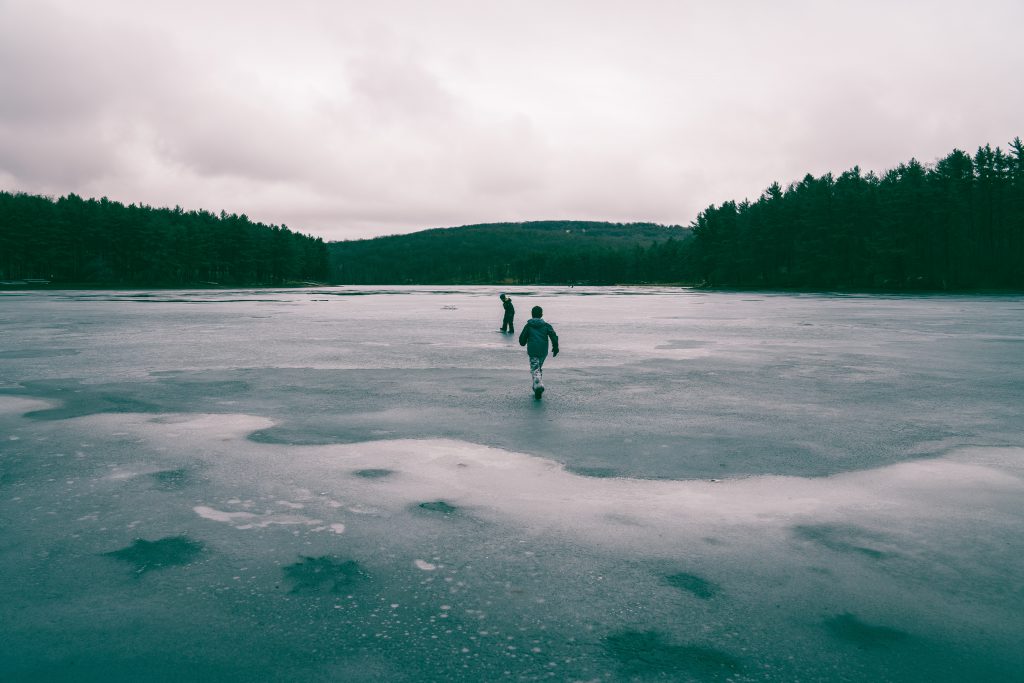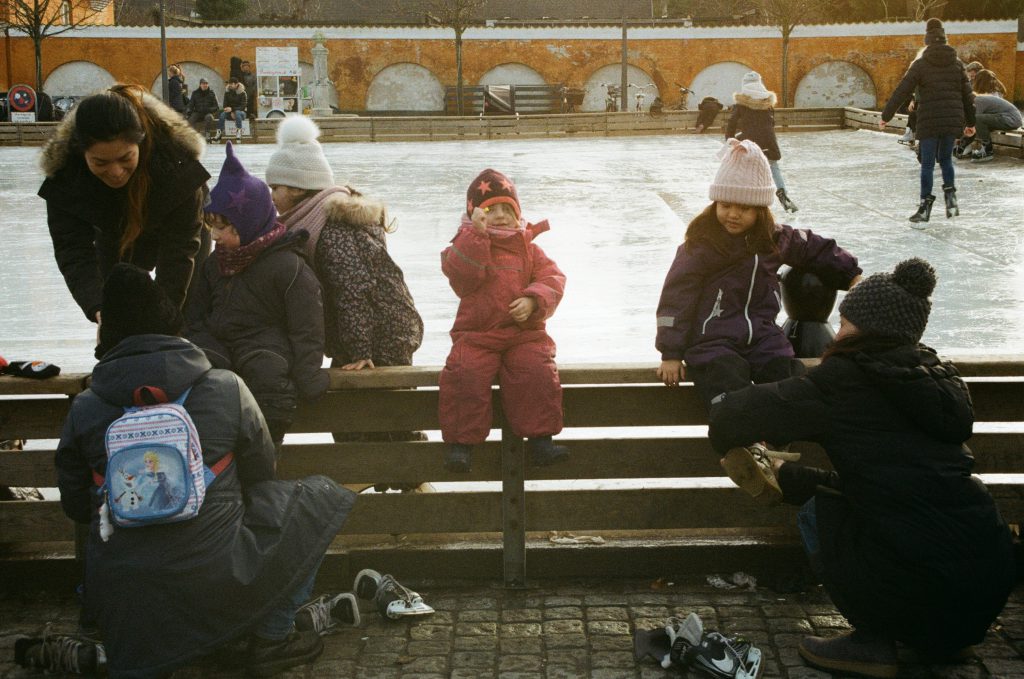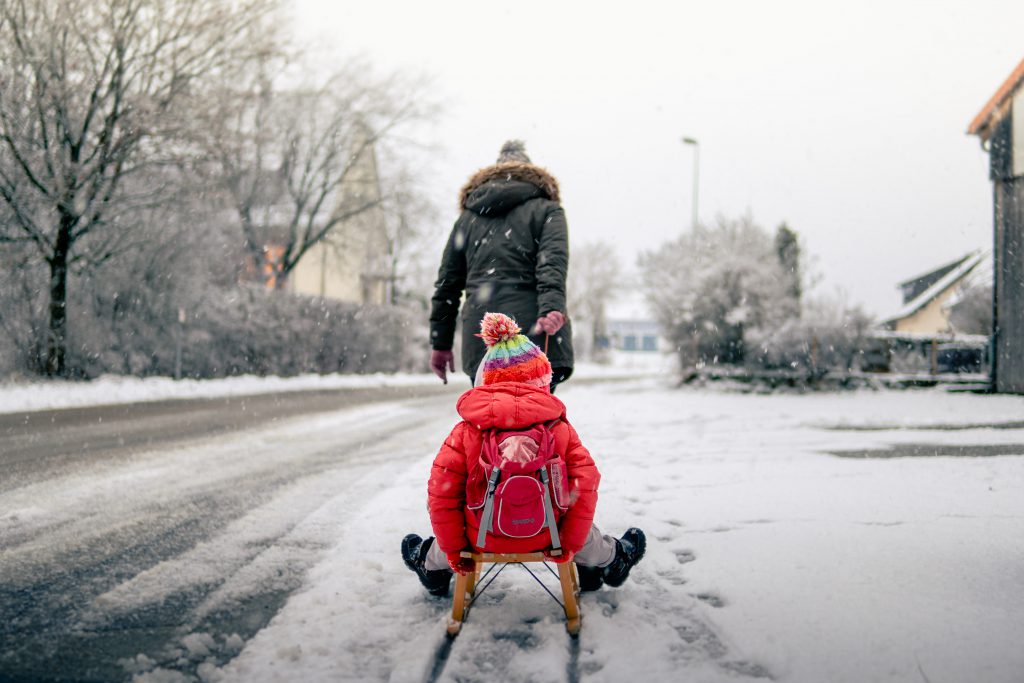Tips: How children stay safe on a frozen lake
Children love to play outside but especially when it is winter, they love it even more. During the colder days there are lots of activities, like building a snowman, snow walks, going on sleighrides or ice skating, that children enjoy doing.
As much fun it is to play in the snow, there are some dangerous situations that should be avoided. Especially frozen lakes and ice catch children’s curiosity and attention. Therefore, children need to be taught how to behave in those situations. In this article we will give you Tips on how children stay safe on a frozen lake.

Frozen lakes and ponds are inviting spots for ice skaters and children looking to explore. But the ice thickness varies at this time of the year. Therefore, the ice thickness must be measured in multiple locations before children and other people start walking on it. But even if the ice is thick enough to walk on, children must always be watched closely and should never go on the ice alone. Furthermore, they should always wear a life jacket and bring safety equipment that includes ice picks and a cell phone in case of any emergency.
When is a frozen lake safe?
Many factors play into the safety regulations of frozen lakes. The temperature, water composition, and underwater geography play an enormous impact when ice is considered safe. The ice on the frozen lake should be at least 20-25 cm thick for a group of people who want to skate. Remember, the more people are on the ice, the more weight is on the ice as well. Watch for dangerous signs like cracks, seams, pressure ridges and slushy areas.
Follow these steps to measure ice safety:
- With a drill and a tap, you can measure the ice thickness
- Do not go on ice if there are open water patches
- Always check the ice thickness in various places
- Dark blue ice is safer than white or grey ice
- Always consult with the local authority’s ice safety assessments

Ice safety guidelines
Note: Ice can never be considered “safe ice”, but the following guidelines will help minimizing the risk on the ice.
• Always wear a life jacket on the ice (except when in a vehicle)
• Children need to be supervised when they are near the ice at all times
• Kids should stay off ponds, streams, and other bodies of water
• A thin coating of ice on a pond or lake does not mean it is safe
• Check ice thickness at regular intervals – conditions can change quickly
• Rivers and channels should be avoided
Proper rescue techniques
Anyone who is on ice outdoors should have knowledge of proper ice rescue techniques. Even children should know these techniques before they step on ice.
- Immediately after someone falls through the ice call 112
- Everyone on the ice should lie down to distribute their weight over a larger area
- Reach the person in the water using a long reaching assist such a large stick, a rope, or a ladder
- The person in the water should constantly kick and slowly ease their way out of the water
- Once the person is out of the water, they should crawl or roll away from the broken ice area
Ideas for enjoyable family frozen lake skating

- Children should wear helmets
Children falling and hitting their head on the ice is extremely dangerous and can cause severe injuries. Especially smaller children who are little and new to ice skating are at risk of falling bad. But even skaters who know how to skate can fall severely and therefore wearing a helmet is just a smart thing to do.
- Dress warm enough
For a day outside, you and your kids should be dressed warmly enough. Warm socks, neck warmers, snow pants, a head, gloves, and a warm jacket will keep you warm and cozy during snowy and freezing days.
- Boots instead of ice skates
Wearing ice skates can be really challenging for children. Therefore, kids can just go in their winter boots to have lots of fun running, sliding, and exploring the winter wonderland!
- Enjoy the winter sun
The weather in winter can be quite depressing. On a chilly day, just a little bit of direct sun can lift your mood immediately and help you to feel happier and warmer.
- Bring a sled
A sled is an easy way to push babies and toddlers around. Add some blankets to keep your children warm and make it extra cozy for them. Furthermore, you can carry snacks and other toys on the sled when going on a long winter walk.

- Snacks and Drinks
If you go out on a winter adventure with your kids, it is always a promising idea to bring snacks and drinks along. As a treat you can put some hot chocolate in a thermos bottle as a special drink for everyone.
Going with your family on a frozen lake should be fun. Therefore, take the opportunity to enjoy your family, share some laughs and have fun but always keep in mind to stay safe and watch your children when they are on a frozen lake!
Find out more about our child-safe solutions to create a safe environment for children to grow up and play.